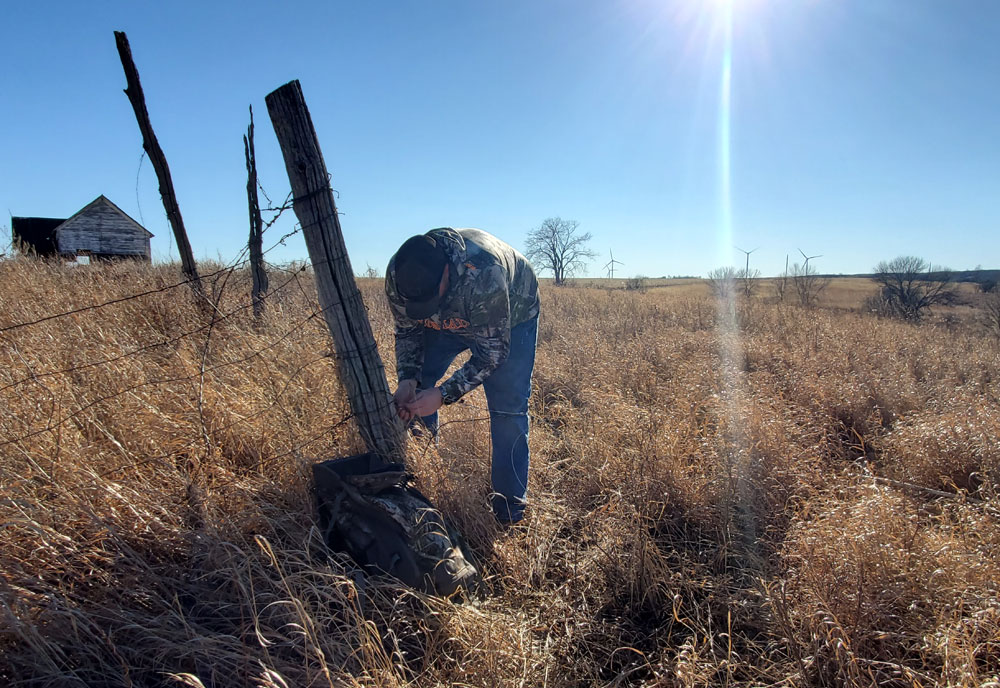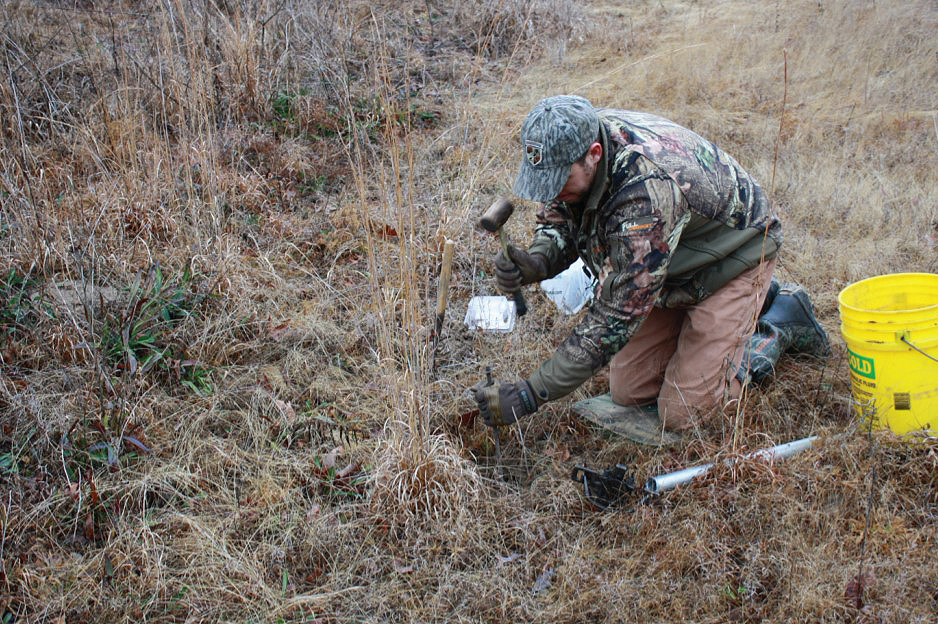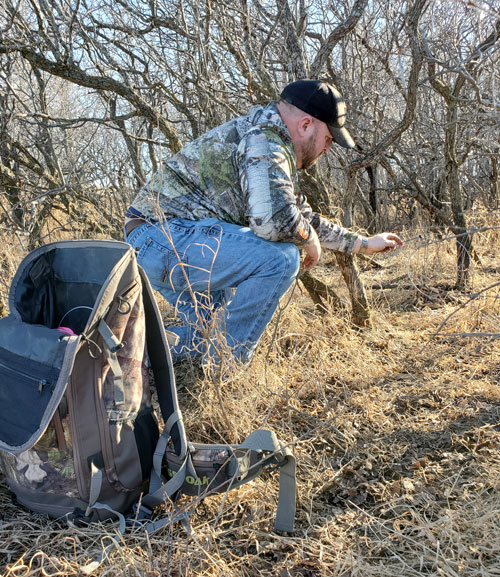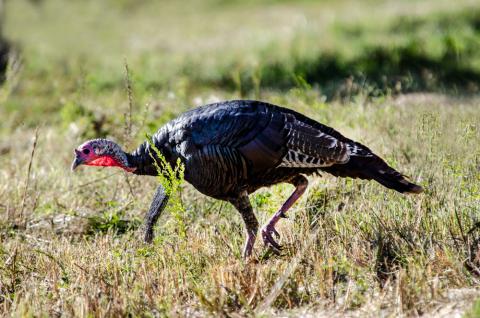Travis Leier | Mossy Oak ProStaff

Predator control is an essential part of conservation. Just as maintaining food, water and cover is essential for deer herd population and health, predator control is essential in maintaining not only the population of upland birds, deer and deer fawns but also maintaining a healthy balance of predators. As we all know, the circle of life is the original conservation plan but with the help of hunters, trappers and conservationists, we can help maintain these populations to healthier more prosperous levels.
Through different methods of trapping, we can make predator populations healthier. How exactly is this achieved you may be asking. Through the process of trapping, we are able to eliminate predators who may be carrying disease such as mange or fur lice. These diseases are spread throughout the population by contact so as a coyote with mange runs around and interacts with others it effectively spreads that disease among the population. Through trapping, we can remove the infected animal from the population and help promote a healthier population.
This was my first year working with snares and while I was someone who had always heard the “bad” side of snaring, I decided to get educated on them to form my own opinion on the technique. If you’re familiar with snaring, you’ll know exactly what I’m talking about; you always hear the stories of people’s pets getting caught in these traps either upland game hunting or by sheer accident. While these events can and do happen, usually it is caused by lack of communication or poor judgement. Let me emphasize that. Typically when a hunting dog gets caught, it’s due to people hunting on property without permission; they don’t have the knowledge that someone is snaring on the property. Now the flip side of that situation is individuals setting snares on property they don’t have the proper permission to set traps on, or they are set on property before they can legally set them. Like in many controversial situations, the snare itself isn’t the issue, poor judgement or lack of communication is most likely the issue.

Having touched on the bad stuff, let’s look at all the good sides of snaring. As I previously mentioned, this was my first year using cable devices and while there are different types, I encourage you to check your local regulations before purchasing and setting them up. I had decided to go with dispatching snares. Here in North Dakota, regulations state that you must check your traps a minimum of every 48 hours. Through my experience, I prefer to check my traps daily. Many of the areas I was trapping in were heavily populated whitetail deer areas. Now you may be asking what happens when or if you catch a deer in your snare? Again check your local regulations, but here in North Dakota snares are required to have a break away at 350 lbs. of pull so if a deer were to get caught they typically will have enough force to snap the break away and be free of the device. I was fortunate to not have any situations where a deer got caught and wasn’t able to break free but have heard of situations of yearling deer getting caught and a good old fashioned wrestling match ensues to get it free of the snare. This comes back to being ethical and checking your traps as often as possible.
I used to consider myself a pretty decent hunter, was able to discern tracks of most animals and be able to tell you, “it’s going that direction.” Since I’ve started trapping, I have been amazed at how well rounded of a hunter it has made me. Now, I find myself constantly looking at tracks to find the best possible spot to place a set at to have the highest probability of catching the prey I am after. Not only am I looking at the tracks to decipher what type of animal it is but also what is that animal doing at that time. Here in North Dakota the snow we typically receive in the winter definitely makes that a lot easier!

I had placed my first few sets blindly, basically looked around and thought to myself, “this looks like a good area.” Three weeks passed by and nothing. Luckily, we had received a few inches of snow so I started paying better attention to where my sets were. While I was in areas, there was movement of coyotes; I just needed to move my sets a few feet and it was a game changer. Through the snow I was able to see the tracks where the coyotes were passing by frequently. I started watching areas where I’ve gotten pictures of them on trail camera then going back out to those areas and looking for tracks. I discovered the similarities between coyotes and deer were extremely close. Natural funnels and field edges were all good places to find coyote tracks.
When it comes to snaring, obviously we want to be selective on what we catch because of the lethality of the device. A great place to look for tracks is in those thickets of buck brush that look too thick for anything to possibly go through but are excellent places for rabbits and pheasants to hide. These are ideal spots to set up a snare. You’re going to limit exposure to animals you don’t want to catch, because they are areas they’ll avoid but great areas to catch coyotes because they’ll be running through there chasing after the small game that inhabit those areas.
Since it was my first year snaring, I relied heavily on the expertise of a seasoned trapper who helped to point me in the right direction when I would get frustrated or have dry spells. One thing I quickly learned is even though you may think it’s a good spot and you see signs of coyotes through there but weeks go by and you don’t catch anything, don’t give up on that spot. Much like many other outdoor activities, patience is key. It may take a while but sooner or later, if you saw signs, that set will likely pay off. Trapping is a dying art that needs to be rejuvenated. Many of these seasoned trappers have tips and tricks that they have learned over many years, the best advice I can give you is to find yourself a mentor in trapping and pick up the tricks and tips you can from them. Sometimes you can even offer them a new perspective on something they never thought of trying.






























